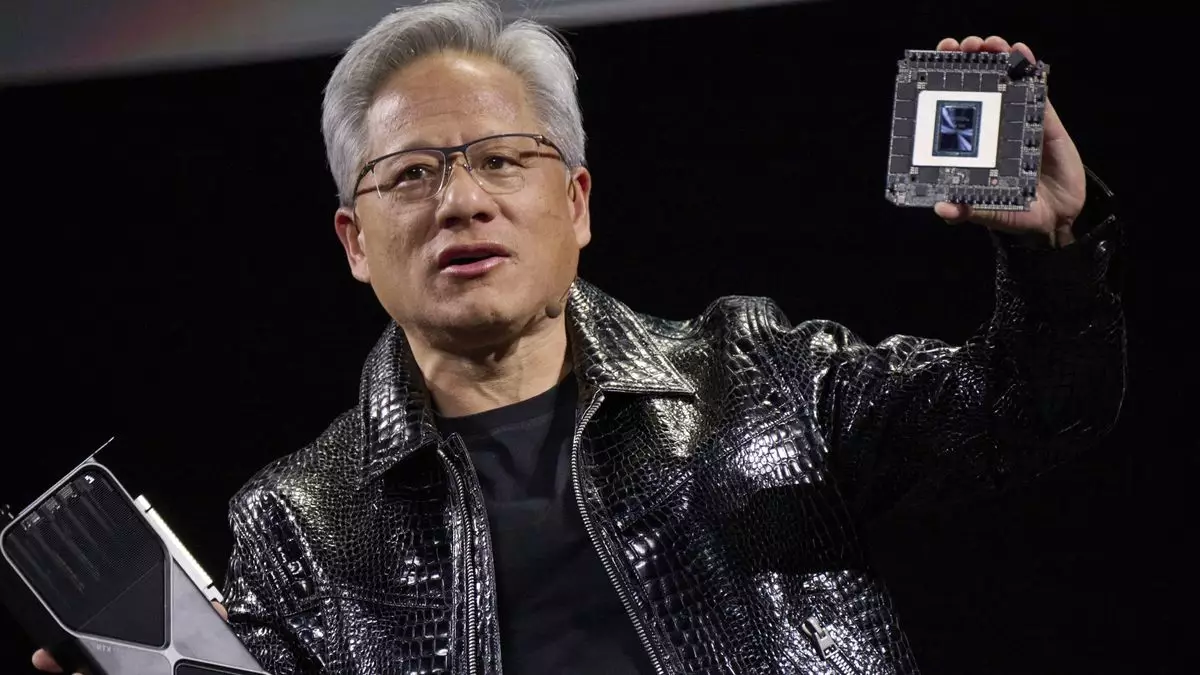The GPU market is witnessing a transformative era driven by rapid advancements in artificial intelligence (AI) and gaming technology. However, the recent difficulties experienced by Nvidia with its Blackwell series of AI-optimized GPUs have raised concerns among its significant clientele, including tech titans like Microsoft, Amazon, Google, and Meta. Reports suggest that these companies are cutting back on orders due to notable overheating issues, casting a shadow over Nvidia’s forward momentum. This article delves into the implications of these developments and separates the potential impacts on Nvidia’s upcoming RTX 50 gaming GPU lineup from its troubled AI counterpart.
The core of the issue lies in the series’ reported overheating, which has disrupted operations and resulted in delays of orders for Nvidia’s latest AI architecture. Following these challenges, Nvidia’s CEO Jensen Huang openly acknowledged “design flaws” within the Blackwell GPUs, asserting that low yields were a direct consequence of internal errors. Although Huang’s statements did not explicitly attribute overheating to the identified design flaws, the timing of these occurrences raises questions regarding the connectivity of these issues.
This admission starkly contrasts with the company’s long-standing reputation for innovation and reliability. The design flaws Huang referenced pertained to yield rates, which denote how many functional chips a manufacturer can derive from a production wafer. The broader implication here is that while some technical setbacks are being addressed internally, external perceptions of unreliability may persist and influence future business.
Critically, while both the Blackwell series and the new RTX 50 gaming GPUs are grounded in the same architectural lineage, caution must be exercised in conflating the two. The workloads each chip is built to handle are inherently distinct; AI models require extensive processing resources geared toward matrix calculations, whereas gaming GPUs focus on rendering graphics efficiently. Consequently, any significant design-related challenges stemming from Blackwell could very well be isolated from the gaming sector.
The difference in application means that the architectural specifications, including the layout and number of functional units, vary considerably between these two product lines. Nvidia’s gaming GPUs are designed with different parameters in mind, which should theoretically mitigate concerns fed from AI-related issues. This is a critical distinction that lends further credence to the argument that the heat issues plaguing Blackwell may not reach the upcoming RTX series.
The market reaction to these developments has been cautious, particularly as Nvidia’s longstanding partners reassess their purchasing strategies. Reports indicating that several companies are seeking to leverage earlier generation “Hopper” GPUs suggest both a desire to maintain operational stability and a lack of confidence in the Blackwell series. This shift reflects not just concerns over performance but speaks to a larger sentiment within the industry regarding reliability and long-term partnerships.
It is crucial to note that the narrative surrounding Blackwell’s overheating has not been universally substantiated; much of the discourse stems from a single source, namely The Information. While anecdotal accounts and investigative journalism are vital to understanding the broader implications of these technical failures, broader corroboration from additional industry sources could help solidify or refute these claims more convincingly.
Despite the troubling situations emerging from Blackwell, Nvidia remains a powerhouse in the gaming GPU sector. As they prepare to launch the RTX 50 series, one must consider the substantial strides in thermal management and chip design the company likely implemented since Blackwell’s inception. Whether these new architectures introduce vulnerabilities similar to their predecessors remains to be seen, but Nvidia’s historical prowess suggests resilience in the face of technical challenges.
Ultimately, as consumers and industry watchers await the debut of the RTX 50 series, the consensus should remain optimistic yet cautious. The key takeaway is that the gaming and AI markets, while interconnected, may not necessarily impact each other in predictable ways. Nvidia’s emerging narrative, driven by innovation and adaptation, will ultimately determine its standing as it navigates these difficulties, but a careful examination of both product lines will be crucial moving forward.

